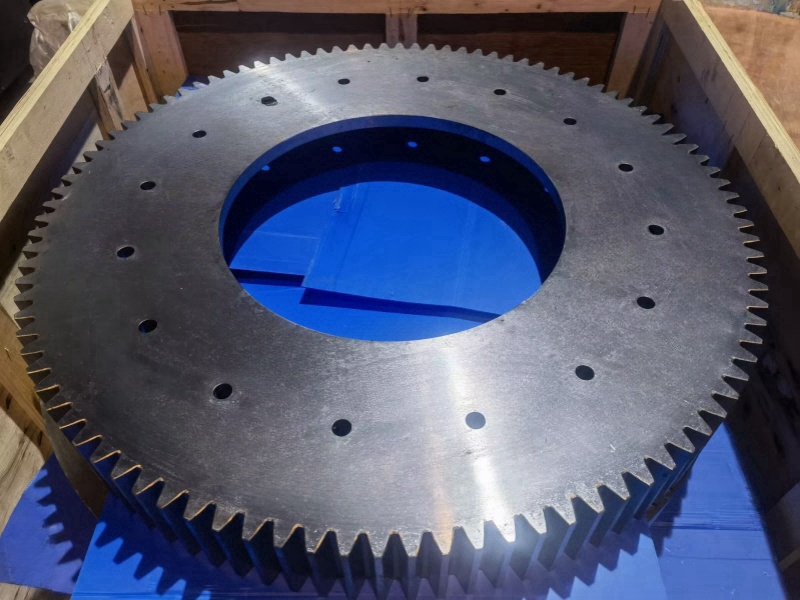
What Are You Looking For?
There are many things to pay attention to in the production process of gear forgings. How does Wuxi Changrun improve the quality of GEAR forgings?
Hardness is an important quality inspection index for heat treatment of gear forgings. This is not only because the hardness test is simple, fast, and non-destructive, but also because other mechanical properties can be inferred from the hardness value. Reasonably determining the hardness value after heat treatment will endow forgings with good performance, which plays an important role in improving quality and extending durability.

To improve the quality of gear forgings, in addition to requiring hardness values, other mechanical performance indicators must also be specified:
1. Reasonable combination of strength and toughness. Generally speaking, the strength and toughness of steel materials have a trade-off relationship. For forgings, primary impact toughness is commonly used as a safety criterion, pursuing high toughness indicators without sacrificing strength, resulting in products that are bulky and have a short lifespan. On the contrary, for molds, in order to improve wear resistance, the pursuit of high hardness and high torsional strength neglects the role of toughness in reducing mold tipping and breakage, and the service life is not long. Therefore, investigation and analysis should be conducted on the working conditions and failure modes of forgings, strength and toughness are required to determine the strength and toughness indicators that should be selected for forgings.
2.Properly handle the relationship between structural strength, material strength and system strength. The strength indicators of various materials are measured using standard test bar, which depend on the microstructure state of the material (including residual stress, surface state and stress state). The structural strength of forgings is influenced by size and notch effects, while the system strength is related to the interaction with other forgings. The structural strength of forgings is influenced by size and notch effects, while the system strength is related to the interaction with other forgings. There is a significant difference between these three, such as the smooth test bar of the material having high fatigue strength, but the fatigue strength of the actual object may be very low. Therefore, for certain important parts, it is more appropriate to determine the mechanical performance indicators based on simulation test results.
3. The strength matching of the assembly should be reasonable. A large number of experiments and practical applications have shown that the service life can be extended when the combination components (such as worm gears, chain sprockets, ball and ring bearings, and transmission gears) reach strength matching. The center and surface strength of forgings with surface strengthening should be reasonably matched. When surface strengthening parts (such as carburizing quenching, Carbonitriding quenching, nitriding, induction hardening, etc.), When the hardened layer reaches a certain depth, the center should have appropriate strength to achieve a good match between the center and surface strength, in order to ensure that the forging has a high service life. If the central strength is too low, the transition zone is prone to generating fatigue sources, leading to a decrease in fatigue performance. If the central strength is too high, the residual compressive stress on the surface is small, and the fatigue life is not long.